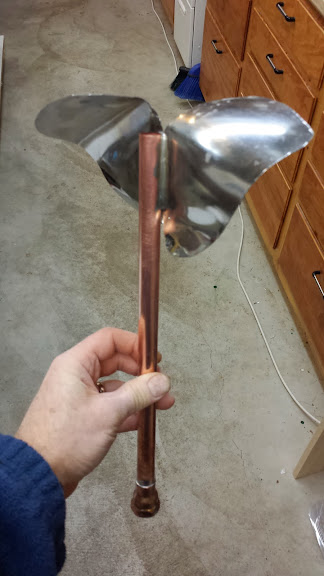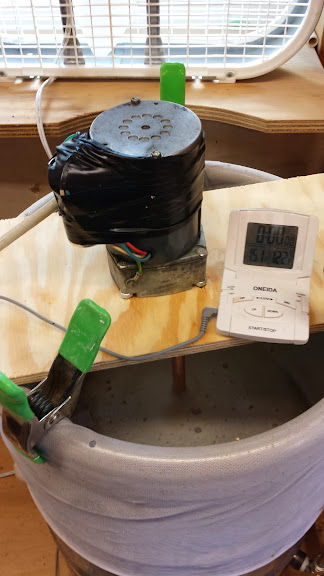Hi,
I am not PJ but here is what I just came up with for this motor.
I welded a short 1/2" iron nipple to one of the gears that came with the motor.
Then I used a copper for the rest and screwed the 2 together.
1/2 copper female - 1/2 pipe adapter, then a short piece of pipe then made a propeller contraption from a old cheap stainless bowl.
I cut it out with a tin snips and soldered it to the pipe.
I just sat the motor on a piece of plywood with some holes in it for the mounting bolts and shaft... not even bolted tight.
I just hand tightened the copper shaft to the motor assembly for easy cleaning ... it ran for an hour and did not fall off or get loose.
My efficiency went up 3% also.
It worked GREAT.
My ebiab setup never worked better than today.
FINALLY no stratification... my temps were the same all through out my kettle.
thanks PJ for posting this !!!
enjoy the pics




